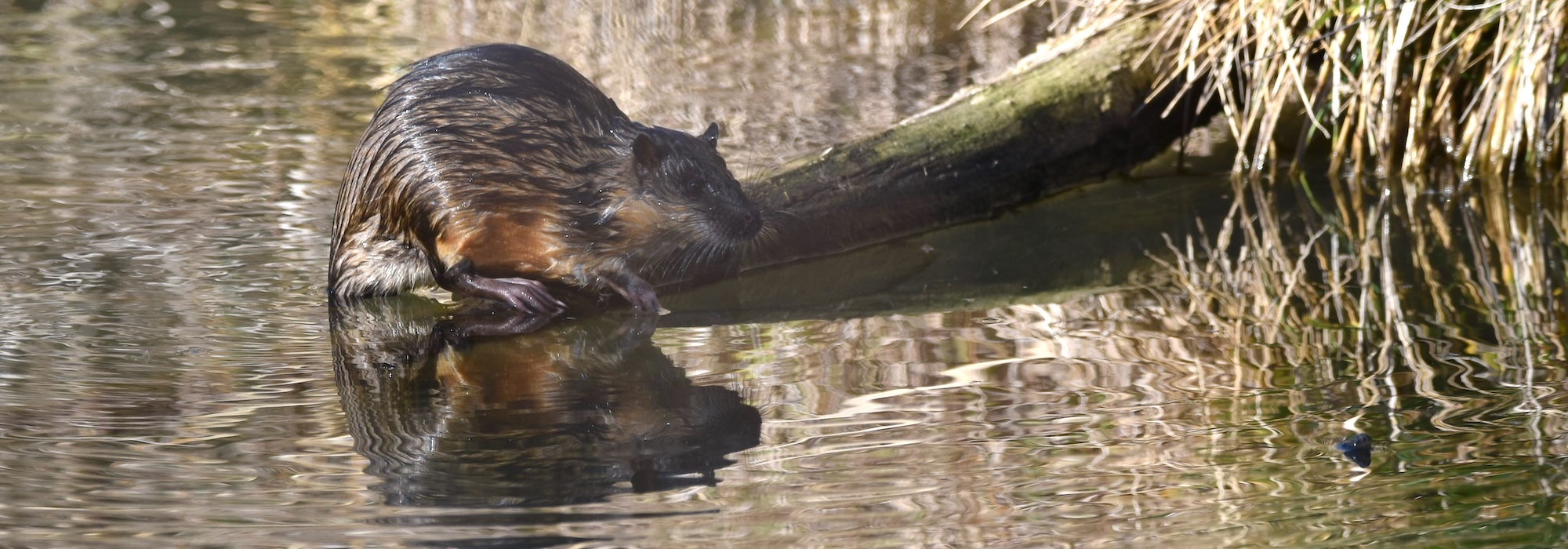
Rakalis (Hydromys chrysogaster) are key indicators of a healthy waterway.
Our native water rat
The rakali, also known as the water rat, is an intriguing semi-aquatic mammal native to Australia. These intelligent creatures primarily live in freshwater environments such as rivers, lakes and wetlands. They are exceptional swimmers and have adapted to their aquatic lifestyle remarkably well.
While rakalis are not currently considered endangered, their populations face threats due to habitat loss caused by human activities and pollution. Encouraging conservation efforts is crucial to ensure their survival..
Variety of homes
Rakali live in lots of different places where there’s water. You can find them in swamps, ponds, lakes, rivers and even in man-made places like irrigation channels. They’re not picky! Sometimes they hang out in places where the water is a bit salty, like estuaries and beaches by the ocean.
They like places where there is lots of stuff to hide in, like tall grass, bushes, or big rocks near the water’s edge. Rakalis are pretty good at making homes in all sorts of places!
Fun facts and features
- The scientific name of the Australian water rat is Hydromys chrysogaster, which translates as “golden-bellied water mouse”. Since 1995 they have been referred to as rakali – the name used by the Ngarrindjeri people in the lower Murray River and Coorong region of South Australia.
- The ears are small and can be folded flat against the head, and the muzzle is blunt and furnished with a dense set of long whiskers.
- Rakali are known to eat cane toads. By flipping the toads over before biting them, they avoid the poisonous parotoid glands found on the toad’s neck region.
- They are Australia’s largest rat and will fight introduced rats. You can tell them apart by their pale belly, mass of whiskers and the white tip on the end of their fat tail.
- Rakali can grow up to around 40 cm in length and weigh in at around 1 kg.
- They are designed to live in waterways, with their webbed feet and water-resistant fur.
- Rakali can use rocks as tools to crack open shells.
- Rakali mainly dine on fish, aquatic insects, crayfish, crabs, mussels, clams and (to a lesser extent) frogs and turtles.
Classroom activities
Build a rakali habitat
What you need
- shoe boxes
- art supplies e.g. clay, paper, cellophane, paint, markers
- materials from the garden e.g. leaves, pebbles, sand, twigs
- reference images of rakali habitats.
Steps
- Discuss where rakali like to live, their preferred habitats. Emphasising features like water bodies, burrows and surrounding vegetation.
- Divide students into small groups and inform them that they will be creating a rakali habitat in a shoe box.
- Encourage students to plan their habitats, considering the layout, elements and materials needed.
- Send students out into the school grounds and they have to search for habitat features of the rakali. While searching, they collect a small sample of these features; enough to use in their diorama. Students then come back to the classroom and build their habitats.
- Using the sourced and provided materials, students create their rakali habitats inside the shoe boxes.
- Each group presents their habitat, explaining the features they included and why they are important for rakali survival.
Rakali adaptations
What you need
- ‘Rakali features’ activity sheets
- drawing/colouring supplies
Steps
- Conduct a discussion on rakali adaptations, emphasising their physical features that support their aquatic lifestyle.
- Provide drawing materials and ask students to draw and label one of the two rakali activity sheets, focusing on its unique features such as webbed feet, waterproof fur and a long tail. Draw some food and habitat too.
- Encourage explanations of how these adaptations help rakali survive in their habitat.
